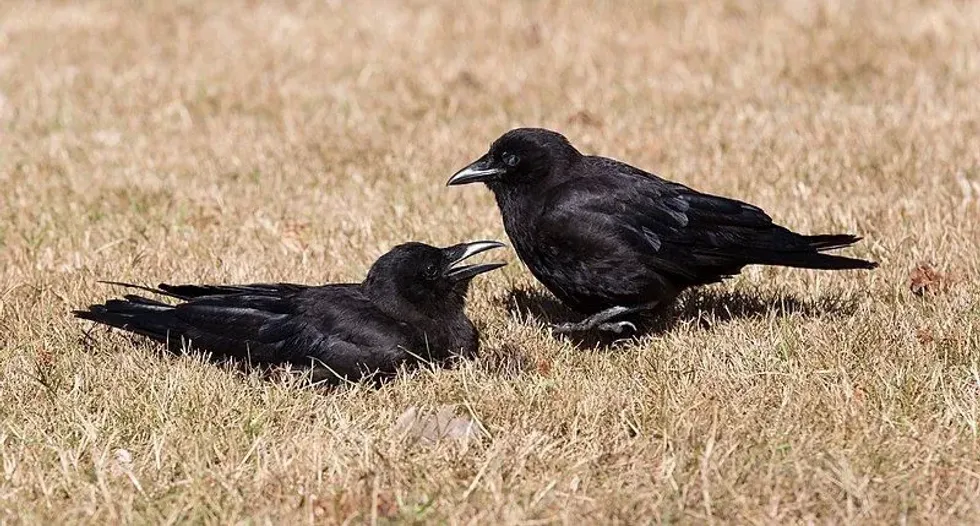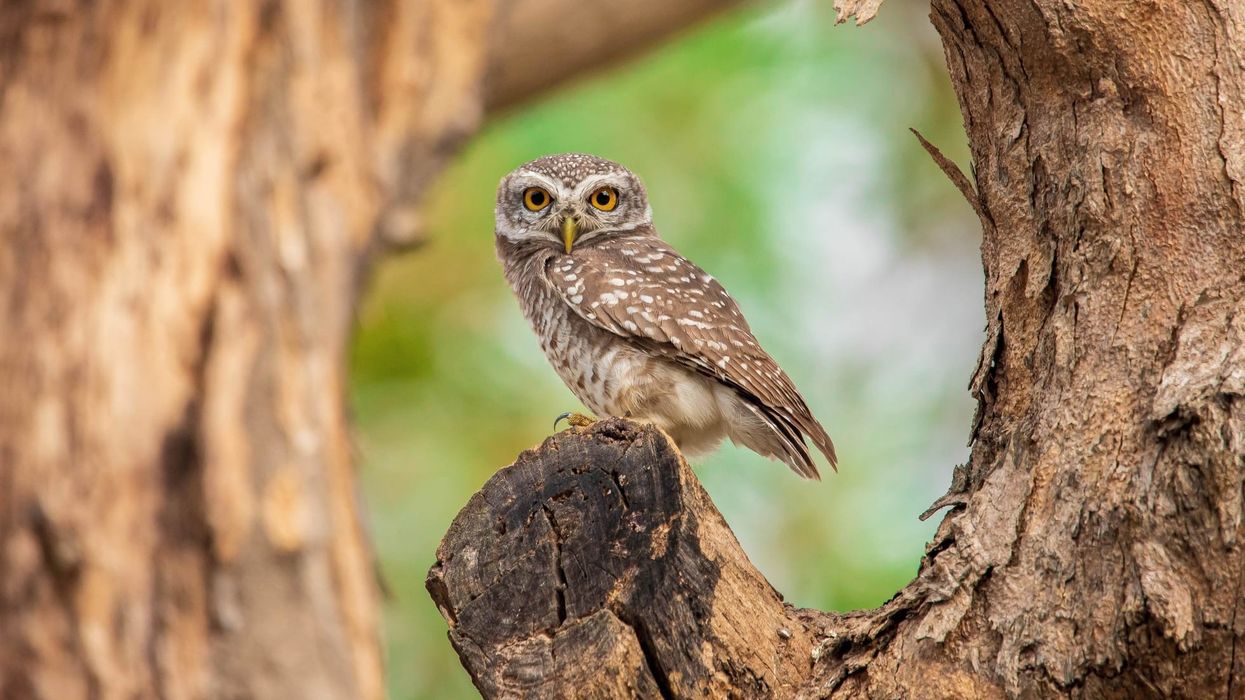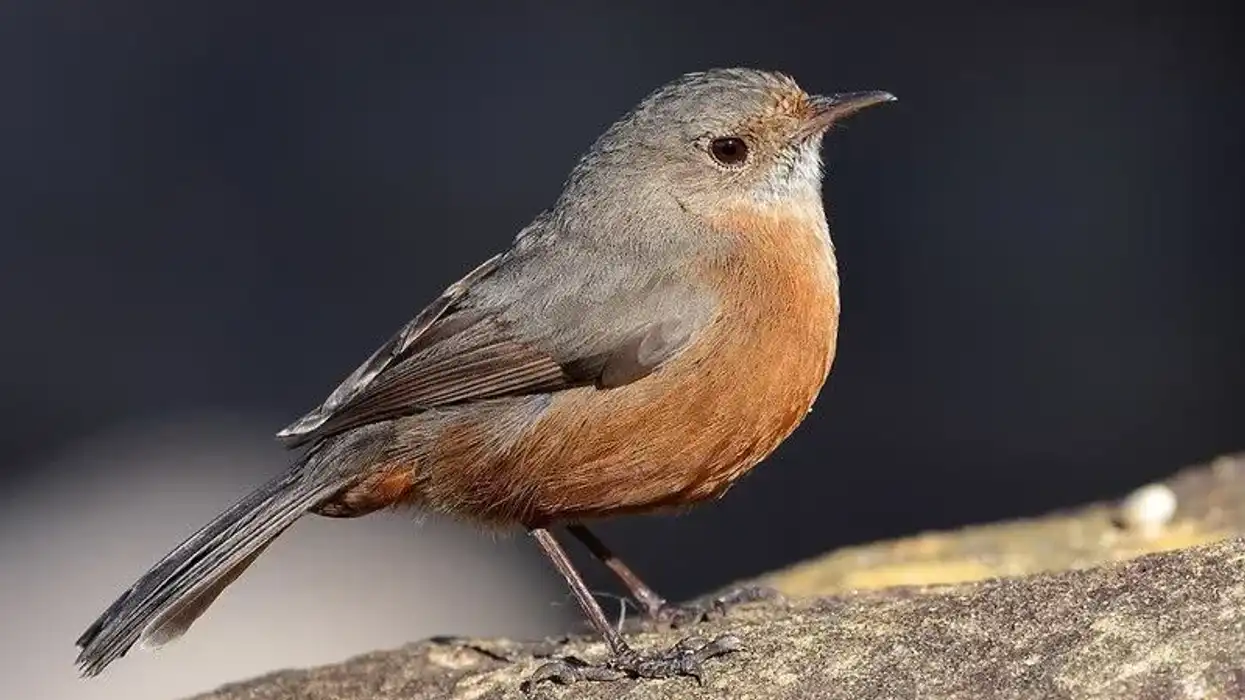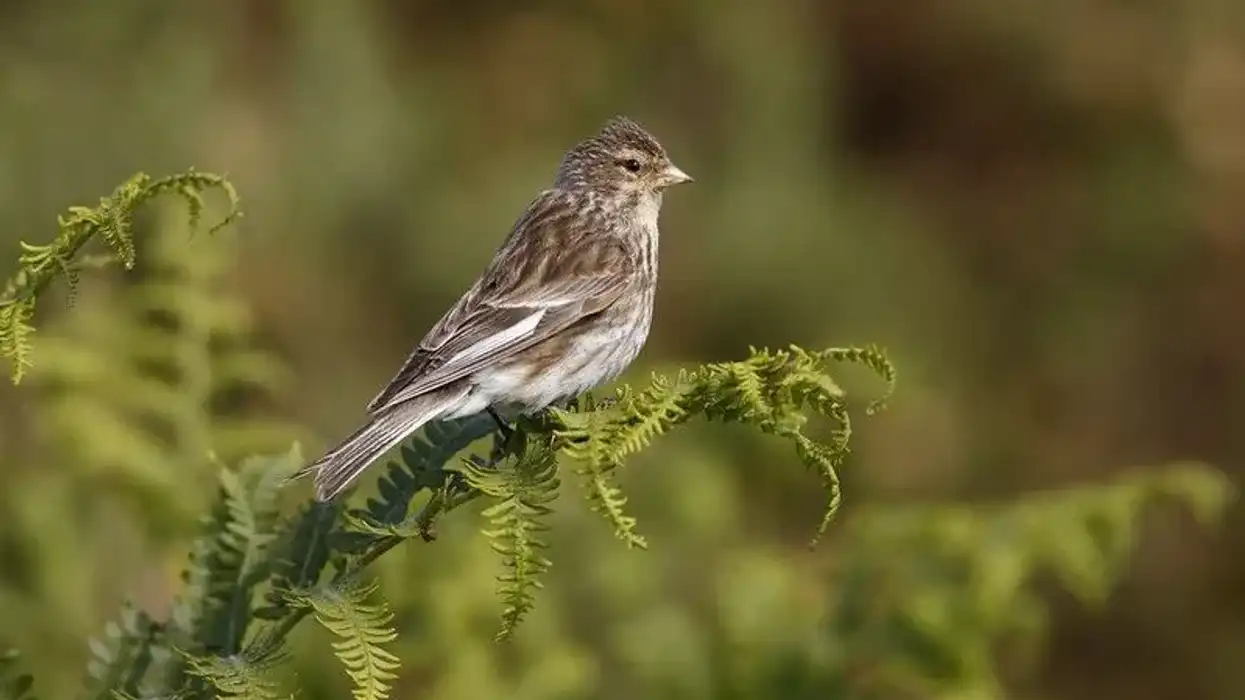The American crow is also more commonly known as a common crow or crow. The American crow's scientific name is Corvus brachyrhynchos, in which 'brachyrhynchos' means short beak.
Even though the American crow has a large beak, they have been given this name because their beak is smaller as compared to a raven, a bird of similar species. There are about 130 species in this family, including crows, American crows, jays, common ravens, rooks, magpies, and nutcrackers.
This bird also collects shiny objects and stores them in its nest.
This bird is very intelligent, as concluded by the results of problem-solving skills in lab settings, especially when it comes to source and gain food. This bird is also known to mob and dive-bomb hawks, owls, herons, and other intruding birds in the wild.
The bird is also known to mob as a way of play or entertainment to harass cats and dogs. In winters, the American crow forms large flocks for mobbing, communal roosts, or to source food.
For more relatable content, check out these carrion crow facts and Hawaiian crow facts for kids.
American Crow Interesting Facts
What type of animal is an American crow?
The American crow, Corvus brachyrhynchos, is a crow species found in North America.
What class of animal does an American crow belong to?
The American crow, Corvus brachyrhynchos, belongs to the Aves class of the family Corvidae.
How many American crows are there in the world?
According to the North American Breeding Bird Survey, the American crow is present in abundance, and their population has been recorded to be stable between 1966 and 2014. It has been estimated that their global population is 27 million. However, their population has been affected after the introduction of the West Nile virus in 1999.
Where does an American crow live?
The American crow's range is widely distributed in North America. During their breeding season, their range can also extend to Canada, except for the extreme north.
What is an American crow's habitat?
The American crows are highly adaptable and prefer open or sparsely wooded habitats like agricultural areas. But the American crow's habitat can also urbanize and can be seen on golf courses, athletic fields, parking lots, and landfills. However, they do not like heavy forests and arid deserts.
Who do American crows live with?
American crows are known to be highly social birds that live in groups more often than alone. They can be seen as a part of communal roosts, which is a group of birds that sleeps together.
They are also known to stay together in a family group that would consist of the breeding pair and the offspring. These crows stay in their family and raise the young crows together. Moreover, a group of crows is known as 'a murder.'
How long does an American crow live?
The lifespan of these North American birds is known to be around seven to eight years. However, according to the Cornell Lab of Ornithology, captive birds might live for longer; for example, Tata, a captive crow from New York, lived for 59 years.
How do they reproduce?
American crows are known to reproduce by laying eggs. Both the parent crows incubate a brood that consists of three to eight pale blue-green or olive-green eggs. The brood is incubated for 17-18 days.
The eggs have specks or blotches towards their larger end. The parent crows stay together and take care of the young chicks together for 28-35 days.
At times, the unmated birds might also help in caring for the young birds, which is a common practice for birds from earlier broods to help raise the siblings. The American crows raise one to two broods per year. The young birds leave their nest four to five weeks after hatching from the egg.
What is their conservation status?
American crows are considered a species of Least Concern as they do not possess any threat of being endangered. Even though these birds are occasionally persecuted for damaging crops for food in large flocks, they can still be found in abundance. These crows, however, are susceptible to west Nile virus infection, which can affect their population range.
American Crow Fun Facts
What do American crows look like?

The American crow looks very similar to other corvids and grackles like the common raven, jay, or crow, making it difficult to identify the American crow apart from other corvids. However, this bird is all black and large.
Their bill is thin and black with a stout shape that makes it easier for them to consume a wide range of food. The male and female crows are identical with black plumage, which might look like a little blue-violet iridescence in bright sunlight.
Their feathers on the throat are short and smooth, and their legs and feet are also black.
Their eyes are dark brown, but they can appear black at times. When the American crow is flying, a square-tipped tail can be seen on the bird, which is straight across.
In various rare situations, the bird may also show white wing patches in which the amount of white can vary. During the flight, the joints in their wings are pushed prominently forward.
How cute are they?
The American crows are not exactly cute birds due to their large body structure and their loud 'caw-caw' call.
How do they communicate?
The American crow call is a well-known and familiar 'caw-caw' call. The sound of their call is raspy and very hoarse. The pitch, tempo, length, and the number of repetitions of their call can vary.
The American crow is also known to mimic other birds' calls and non-bird sounds. These groups are also known to harass and chase predators vocally. This behavior is called 'mobbing'.
How big is an American crow?
The American crow size can reach up to 15.7-20.9 in (40-53 cm), and their wingspan can be as big as 33.5-39.4 in (85-100 cm). This is almost the same size as the hooded crow of the same family.
How fast can an American crow fly?
American crows fly steadily with low rowing wingbeats and do not soar in a very unique, patient, and methodical flapping style. Their exact speed of flight is unknown.
How much does an American crow weigh?
American crows weigh 11.1-21.9 oz (316-620 g), which is the same as the little crow of the same Corvus family.
What are the male and female names of the species?
There are no separate names assigned to the male and female American crows. Even though they are identical in appearance, you can differentiate them as the male birds are slightly bigger than the females.
What would you call a baby American crow?
The young American crow is called a young crow, juvenile, or a chick. The chicks look similar to the adults but have a shaggier and more unkempt appearance. The young crows are known to stay with their parents and take care of their siblings in consecutive years.
What do they eat?
American crows are known to be opportunistic omnivores who can enjoy any sort of available food source. This food source can include insects, amphibians, reptiles, small mammals, eggs, mollusks, seeds, fruit, carrion, grains, nuts, berries, and small animals like earthworms and mice.
For food, they can even look in garbage and kitchen scraps; this is mostly because of the intelligent and curious behavior that allows them to try a wide range of food options.
Apart from this, they can also eat crop pests and aquatic animals like fish, young turtles, crayfish, mussels, and clams. American crows are also famous nest predators known to eat eggs and nestlings of many species like sparrows, robins, jays, terns, loons, and eiders.
Are they dangerous?
American crows are not dangerous, but the presence of their flocks and their behavior can cause big inconveniences. Their flocks can impact agriculture, especially orchards and cornfields, as they can damage the fields.
They are also known to scatter garbage and are nest predators, which negatively affects the population of other birds. Their roosts are also considered to be noisy and messy in areas with high human activities. They are also known to spread diseases through their feces.
Would they make a good pet?
It is not easy to pet these North American birds. These crows are omnivorous scavengers and need to be fed with a wide variety of fresh food every day, which can be hard to keep up with and also expensive.
Moreover, it is illegal to keep them as pets in the US because it is unethical and risky for the crows' physical and mental health to keep these wild birds out of their natural habitat.
Did you know...
The American crow's intelligence is of highly impressive levels. According to the Cornell Lab of Ornithology, they are often surprised at how clever, adaptive, flexible, intelligent, and innovative these birds are.
Do American crows have predators?
American crows have to face more predators at the early stages of life. The nest, eggs, and chicks are always at risk of getting eaten by snakes, raccoons, ravens, and domestic cats. In contrast, the adults are predated less but are still at risk from horned owls, red-tailed hawks, peregrine falcons, and eagles.
Do American crows mate for life?
American crows are monogamous in nature and mate for life. The partners build a nest of twigs and sticks together and stay in it, taking care of the family together.
Here at Kidadl, we have carefully created lots of interesting family-friendly animal facts for everyone to discover! Learn more about some other birds from our myna interesting facts and European goldfinch surprising facts pages.
You can even occupy yourself at home by coloring in one of our free printable Hawaiian crow coloring pages.









